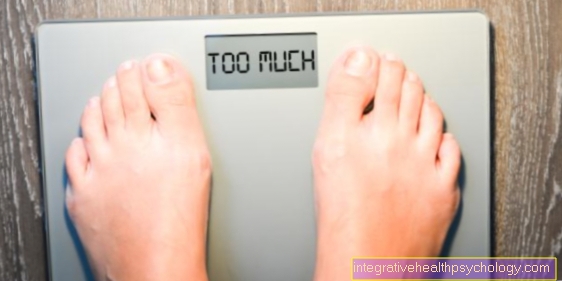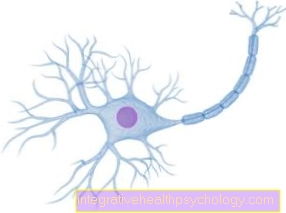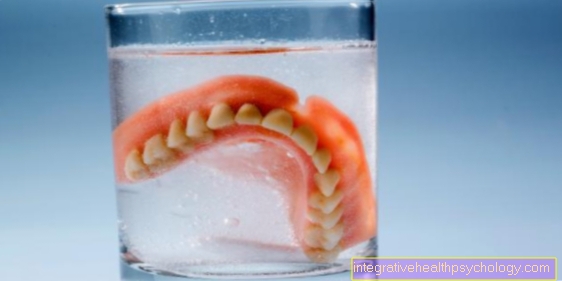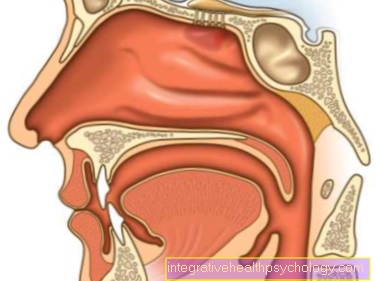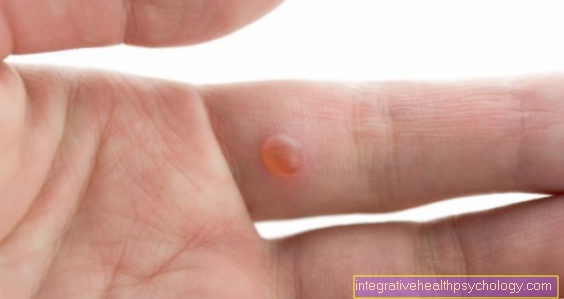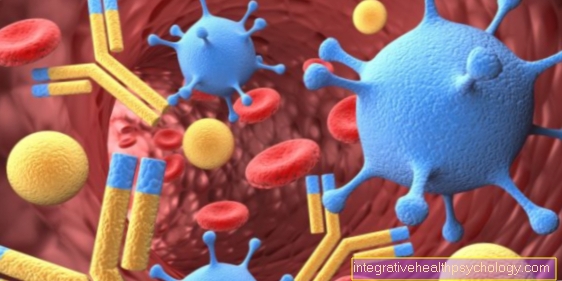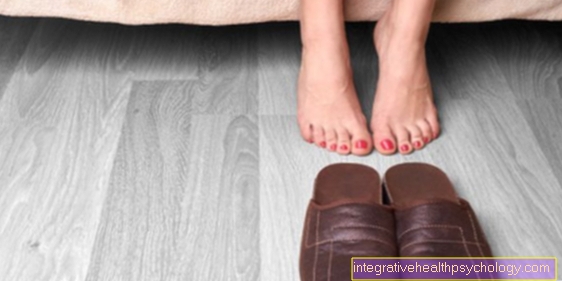Atopic dermatitis flare-up
What is an eczema attack?
People who have a congenital predisposition to atopic dermatitis can experience a flare-up of atopic dermatitis due to various triggers.
An acute worsening of symptoms in a chronic disease is called an episode. Between the attacks, the disease remains calm and does not cause any acute symptoms. The sudden appearance of inflammatory changes in the skin and itching is called a neurodermatitis attack.
When a relapse occurs and how long the symptom-free phases are between two attacks varies greatly from person to person and depends on various factors, such as the patient's general condition or age. A new episode of illness is often triggered by certain triggers.

The triggers
Research shows that there is a genetic component to atopic dermatitis. This means that children whose parents or mother or father suffer from neurodermatitis are more likely to develop the disease than children of healthy parents.
In addition, certain triggers can cause an acute atopic dermatitis flare-up or exacerbate existing symptoms. These triggers include various external influences, such as tobacco smoke, certain fragrances, heat or mold. Pollen (grass, flower or tree pollen), animal hair or house dust mites can also trigger an atopic dermatitis attack in genetically predisposed people. The same applies to clothing (wool, synthetic fabrics) and a number of foods (especially foods with a high histamine content such as cheese, chocolate or wine).
Internal factors such as stress or the psychological state also play a role.
Read more about the causes and trigger factors of neurodermatitis on the following page: Causes of atopic dermatitis
Stress as a possible trigger
Stress is a reaction of the body to emotional or physical exertion. Long-term stress often leads to the fact that we get sick and can also trigger an atopic dermatitis attack. Due to the stress, the body releases more stress hormones such as adrenaline and noradrenaline. This increases inflammation and makes symptoms worse. The patients suffer from eczema, dry skin and severe itching.
- Find out more about this through our article: Neurodermatitis and the psyche - what is the connection?
The therapy of neurodermatitis also includes learning to deal with stress. Targeted relaxation techniques, such as autogenic training or yoga, can help to become more resistant to stress and prevent further atopic dermatitis attacks.
Find out how to do it here reduce stress can.
Sun as a possible trigger
Although many atopic dermatitis sufferers show fewer symptoms in summer, increased exposure to the sun can also trigger a new flare-up. A sunburn in particular is considered a trigger, as the already irritated skin is damaged even more here.
To protect against an attack, patients should avoid extensive sunbathing and ensure adequate sun protection. Sun and heat also make you sweat more and many patients react to increased sweat production with an atopic dermatitis attack.
Mold as a possible cause
Molds are generally considered to be harmful to health and contact with mold should be avoided as far as possible. Studies show that mold, in addition to other diseases such as asthma or allergies, can also trigger eczema flare-ups. Mold in your own four walls is particularly dangerous: the spores spread and get into the air, where they can be inhaled.
In the body, the spores can cause inflammation and irritation of the skin. Molds grow well wherever there is high humidity. The causes of mold growth are therefore often poor insulation of the building, lack of heating or incorrect ventilation.
Psychological factors as a possible cause
Psychological factors have a decisive influence on the development of a neurodermatitis attack. On the one hand, psychological discomfort increases the symptoms, on the other hand, it creates a vicious circle: due to the increased symptoms, those affected suffer from their appearance, have sleep problems due to the constant itching and feel even worse psychologically.
Sleep problems in particular lead to reduced performance and bad mood. The visible inflammation on the skin also leads to the fact that many atopic dermatitis sufferers feel stigmatized and feel enormous psychological suffering. Appropriate treatment by a dermatologist can help break this cycle and alleviate the symptoms.
Symptoms of a flare-up
In the case of neurodermatitis, symptom-free phases alternate with acute neurodermatitis attacks. An acute illness can be recognized by the sudden appearance or worsening of symptoms.
First of all, the affected people suffer from slightly reddened skin areas, which then become inflamed, dry out and flaky. At the inflamed areas, the erythema, the skin is reddened and wet or surrounded by crusts. The agonizing itching in particular is an enormous burden for many patients. Scratching irritates the skin even further and makes the itching worse.
Often atopic dermatitis suffer from sleep disorders due to the extreme itching, feel permanently tired and are stressed.
Find out more about the topic here: Symptoms of neurodermatitis or superinfection
Diagnosing an episode
In most cases, those affected quickly recognize from the symptoms that suddenly set in when they have an atopic dermatitis attack. The dermatologist makes the diagnosis by thoroughly examining the patient's skin. In doing so, he determines how many eczema there are on the surface of the body, how severe the inflammation is and whether the skin is wet or dried out.
The diagnosis of a relapse always includes a detailed discussion with the patient (so-called anamnesis) in order to identify the subjective symptoms and accompanying symptoms, a family history and possible triggers.
Treating a flare-up
The treatment of an atopic dermatitis attack consists essentially of relieving the symptoms, as the disease itself cannot be cured at the moment. The treatment is carried out with special creams and ointments that relieve itching and moisturize the dried out skin. If the itching is severe, antihistamines given in tablet form can also help.
Keeping an allergy diary can help identify triggers for a neurodermatitis flare-up and avoid them in the future. To do this, the patients should write down every day whether they have symptoms of atopic dermatitis, what foods they have eaten or whether they have had contact with animals. Short notes about the mental state or the weather situation (e.g. sweating in the heat) can also be helpful. Together with the doctor, the diary can then be used to search for possible relapse-triggering triggers.
Find out more about the topic here: Treating Atopic Dermatitis or These creams can help with atopic dermatitis.
Home remedies as an alternative treatment
If you have an acute eczema flare-up, there are a number of home remedies that can help alleviate the symptoms. Baths with salt from the Dead Sea have a calming effect on the skin. The bath should last at least 20 minutes so that the sea salt can develop its healing properties. Under no circumstances should the water temperature be too hot, otherwise the skin will dry out further. A water temperature between 25 and 35 degrees Celsius is ideal for atopic dermatitis.
Aloe vera gels help against itching and have a cooling effect. Chamomile tea compresses are also calming and anti-inflammatory.
Read more about the topic here: Home remedies for atopic dermatitis.
The duration of the thrust
How long an atopic dermatitis attack will last cannot be predicted. The duration is completely different for different people and also different in individual cases. Sometimes an episode only lasts a few days, sometimes a few weeks.
In the case of severe attacks, the symptoms can also last for months.
How can you shorten the duration?
In order to keep the duration of an episode as short as possible, the patients can take a few measures themselves. The most important and also the most difficult thing to do is to avoid scratching. Scratching damages the inflamed skin even more, the itching increases and the duration of the attack increases.
In addition, scratching creates the risk of introducing pathogens into the skin, which makes the inflammation worse. Care products that relieve itching and have an antibacterial effect help the skin changes to heal quickly.
Our next topic might also be of interest to you: Neurodermatitis of the scalp
Post-pregnancy relapse
Many women who suffer from atopic dermatitis get a flare-up after pregnancy. The hormonal changes after childbirth have an impact on the entire woman's body, including the immune system. As a result, symptoms may appear for the first time in women who are susceptible to neurodermatitis, or the symptoms of an existing neurodermatitis may become worse. People develop reddened skin, small poplars, dry skin, and itchy skin, and the skin changes can appear anywhere on the body.
There is no need to fear an infection for the newborn baby, as neurodermatitis is not an infectious disease. However, children whose mother or father suffer from neurodermatitis have an increased risk of developing neurodermatitis or other allergic diseases in the course of their lives.

